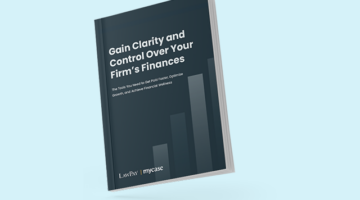With apologies to Langston Hughes(Opens in a new window), we have to ask:
What happens to an associate deferred?
Does he dry up, like a raisin in the sun?
Or fester like a sore — and then run?
Run, run — away from Biglaw. That seems to be what at least some deferred associates are doing, as reported last week by the New York Times in an article(Opens in a new window) about how they spent their deferral years — and how some of them aren’t returning to the well-feathered nests of private law firms when called back.

LexisNexis’ Practical Guidance Is Every Attorney’s Essential Concierge
This tool will — seamlessly and authoritatively — take you from initial research to final draft in just about any practice scenario.
The Times interviewed two deferred associates who aren’t going back to their firms. Nathan Richardson, a 2009 graduate of the University of Chicago Law School who was deferred by Latham & Watkins(Opens in a new window), spent his year doing environmental law research at Resources for the Future — and plans to remain in public interest. Avi Singh, a 2009 graduate of Harvard Law School who was deferred by Quinn Emanuel(Opens in a new window), went off to the Santa Clara County public defender’s office in San Jose — and is staying there.
Due to deferrals, Latham and Quinn just lost the services of two bright young attorneys. And maybe, just maybe, this isn’t a bad thing — not just for these lawyers, but for their law firms….
As the NYT piece discusses, the deferral programs were welcomed by both deferred associates, who gained valuable experience, and by public interest organizations, who received free (and talented) labor. But were the deferral programs also useful to law firms — and not just in terms of helping them keeping overhead low during a slow period? Might these programs be something that law firms should consider doing on a more long-term basis?

Take Control Of Your Firm’s Finances With Tools Built For Success
Position your firm for long-term growth with better financial visibility and control. Learn how to track performance, manage spending, and plan strategically—download the full e-book now.
One problem that large law firms have — or used to have, before the Great Recession, and will probably have again — is associate attrition. Firms invest considerable time and resources in training young associates. Some of these associates stay at the firm for many years, and some — usually just a few — make partner. But many of these associates leave the firms after just two or three years (or less), well before they become profitable to their firms (i.e., generating more in revenue than their salaries and associated overhead). In fact, now that many clients are refusing to pay for the services of junior associates, the profitability point for associates has been pushed even further out.
Deferral programs could be useful to firms by helping them weed out those associates who are most likely to leave the firms prematurely, before the firms have realized a return on their investment. Think of the deferral programs as the Biglaw version of Rumspringa(Opens in a new window): a set period of time for young lawyers to explore the great wide world, to test their commitment before they “join the faith.”
If these lawyers enjoy their deferral time so much that they don’t come back, then it was never meant to be — and the firm just saved itself a few hundred grand on an investment that was going to walk out the door in a few years. But if these lawyers return, ready to tackle commercial litigation or corporate transactions, then the firms should baptize these associates into the Biglaw church. Their commitment to private practice was tested — and came out strong.
Of course, some associates may return to their firms for financial reasons — maybe because they have educational debt to pay off or families to support. This doesn’t undermine the argument in favor of deferral programs. Associates who have families to support are some of the most motivated workers (and gunners for partnership); day care and private school tuition aren’t cheap. And even associates who tell themselves “I’m just at the firm until I pay off my student loans” can be seduced over time with the lavish lifestyle that a firm salary affords. In contrast, associates who do public interest for a year and don’t go back to their firms (1) have a strong interest in non-firm work, which they are prepared to pull the trigger on, and/or (2) are financially independent (or reckless) enough not to need a Biglaw paycheck.
There are additional benefits to firms as well. Supporting public interest organizations with free labor is great PR for the firms (and could perhaps be structured in a way that gives firms some pro bono credit for the work of deferred associates). Associates who do return to firms after a year in public service have developed skills and acquired perspectives that they probably wouldn’t have gained as first-year associates doing document review or due diligence.
Biglaw firms: If you love an incoming associate, let it go do public service for a year. If it doesn’t come back, you never had it. If it comes back, it’s yours forever (or until you pass it over for partner).
Young Lawyers Turn to Public Service(Opens in a new window) [New York Times]